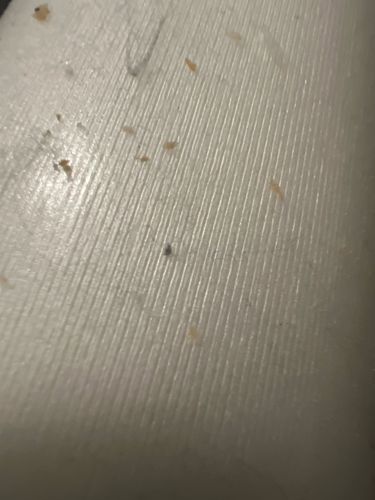Mold Mite
Scientific Name: Various species, often Acarus siro (Flour Mite) or related genera
Order & Family: Order: Sarcoptiformes; Family: Acaridae
Size: 0.3 - 0.7 mm

Natural Habitat
Damp, humid environments with mold or fungi, such as kitchens, bathrooms, basements, and stored food products (grains, cereals, cheese) with high moisture content.
Diet & Feeding
Feeds on fungi, mold, yeast, and decaying organic matter, especially in food products like flour, grains, dried fruits, and cheese.
Behavior Patterns
These mites thrive in high humidity and are often found in large numbers when conditions are favorable. They are photophobic (avoid light) and tend to cluster in dark, moist places. Their presence can indicate a moisture problem.
Risks & Benefits
Risks: Can cause allergic reactions (dermatitis, asthma) in sensitive individuals. They can contaminate and spoil food products, making them unfit for consumption. They do not bite humans. Benefits: Primarily considered pests in human environments. In natural ecosystems, they contribute to decomposition of organic matter, but their primary impact is negative in human settings.
Identified on: 10/30/2025